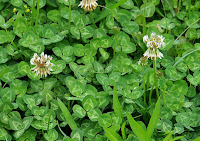Bioflavonoids or vitamins P are water-soluble plant pigments rich in antioxidant, anti-inflammatory, antiallergenic, antiviral and anti-carcinogenic properties. When combined with Vitamin C they are both increased in potency. Together they stimulate the production of bile and so help the digestive system, lower cholesterol levels, treat and prevent cataracts and maintain the health of collagen which is vital for healthy skin and of course this helps slow the aging process of the skin.
Bioflavonoids are found together with vitamin C in elder flowers, onions, citrus fruits such as pomelo and many other plant foods.
Apigenin. This repairs cell DNA and helps to prevent cancer. It can be found in apples, chamomile, onions, oregano, rosemary and passion flowers among other things.
Betanin performs the same functions as apigenin and is to be found in purple skinned aubergines, beetroot and red and purple grapes, etc.
 |
| rosemary |
Biochanin A lowers cholesterol levels and is found in red clover, alfalfa, chickpeas etc.
Delphinidin plus vitamin E reduces or delays the risk of Alzheimer’s and dementia as well as thinning the blood which improves circulation. This is found in blueberries, red currants, and dark grape juice.
Diosmin this strengthens the capillaries and improves blood circulation as well as having anti-bacterial and anti fungal properties. It can be found in spearmint, rosemary, and in lemon and bergamot oils.
Ellagic acid destroys carcinogens and has soothing effects so alleviates anxiety. It is to be found in nuts, including almonds, berries, grapes and a whole host of other plant foods.
 |
| passion flower |
Hesperidin has antiviral and anti bacterial properties and combats the herpes virus. It also helps prevent colds and flu. It lowers cholesterol levels, strengthens the walls of the blood vessels and is in hyssop and citrus fruits such as pomelo.
Hyperin can cure mild depression and helps with mental problems. It also helps to regenerate the cells. This is a phytonutrients which is found in St. John’s Wort.
Kaempferol has antidepressant qualities and reduces the risk of heart disease. It also has antibacterial and antifungal properties and combats the E.coli bacteria. You can find it in cloves, dill, elder flower and passion flowers, broccoli, brussel sprouts, apples, etc.
Lycopene has been found to protect against prostate cancer and heart disease. This can be found in dandelion flowers, tomatoes and sunflowers. This is what makes watermelons and tomatoes red.
Myricetin helps prevent prostate cancer and is in grapes, walnuts, herbs and other plants.
Along with Quercetin and Kaempferol it helps to protect against pancreatic cancer.
Nobility has anticoagulant properties so prevents blood clots in the body. It is found in bitter and sweet oranges, grapefruit, tangerines, and mandarins.
Quercetin is an antihistamine, has antioxidant, antibacterial, antiviral, anti-inflammatory and anti-cancer effects. It is also called meletin and has been used to treat abnormal capillary fragility. It strengthens blood vessels helps those who bleed and bruise easily, and prevents varicose veins from bleeding as well as stopping heavy menstrual flow. It is also believed to help reduce prostate inflammation, remedies cystitis, and helps in cases of atherosclerosis and cataracts. It is found in he bark and rind of many plants and is in oak bark, elder flowers, fenugreek, asparagus, lemon juice, onions and other root vegetables, parsley and beans.
 |
| flax |
Rutin calms the heart, nerves and brain, and enhances the properties of vitamin C. It has antioxidant properties and so may inhibit the growth of some cancers. It also has anti-inflammatory effects and is found in elder flowers, passion flowers, buckwheat, hops, fennel and chamomile.
Secoisolariciresinol diglycoside is a lignan in flax seeds and their oil which has anti-tumour properties which suppress the oestrogen and tumour producing enzymes.
This is the list as it stands at the moment, although more may be added later.























